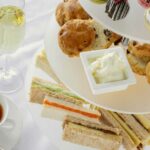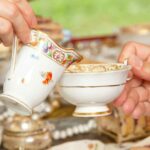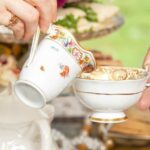Ah, the elegant symphony of clinking tea cups, the dainty dance of finger sandwiches—it’s high tea time, my friends! Buckle up, because we’re about to unravel the intriguing tapestry of high tea etiquette and indulgence. If you thought tea was just a humble, leafy potion, think again.
At a high tea, you indulge in a refined feast of finger sandwiches, delicate pastries, and scones. Sip tea elegantly, engage in pleasant conversations, and embrace the etiquette of this sophisticated gathering that blends culinary delight with social grace.
We’re talking about an affair that makes even scones feel important! From navigating milk-before-tea controversies to deciphering the secret language of saucer placement, we’re your GPS through this refined tea journey.
And trust me, if tea could talk, it would spill some saucy tales! Ready to sip, savor, and sparkle? Let’s dive into the enchanting world of high tea! 🍰🍵
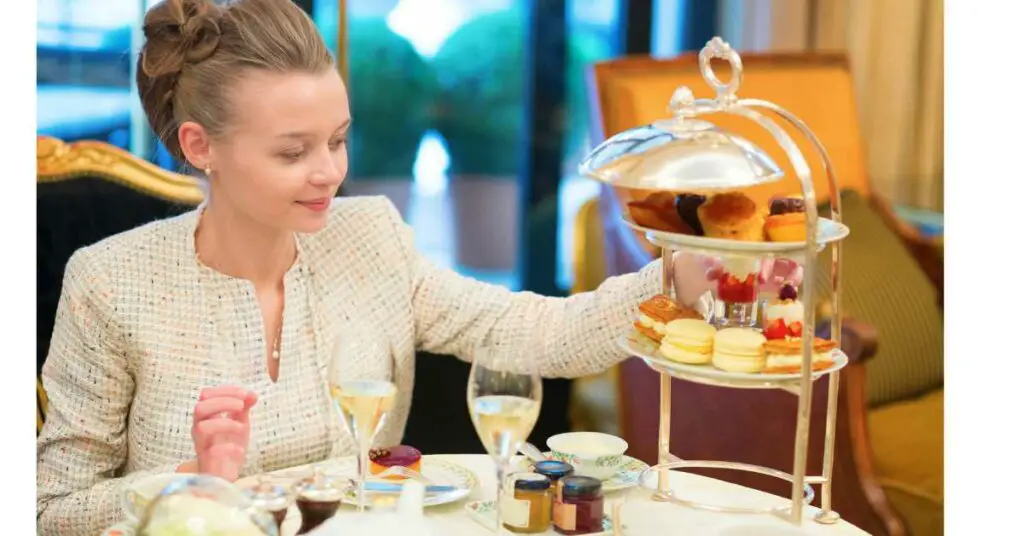
What is High Tea? Unraveling the Essence
High tea isn’t merely a ritual; it’s a symphony of tradition and taste. Contrary to its name, it’s not about fancy hats and tiaras (although those are always welcome!).
High tea originated as a hearty meal enjoyed by the working class, bridging the gap between lunch and dinner.
Over time, it evolved into a sophisticated affair, marrying indulgence with etiquette. Unlike its daintier counterpart, afternoon tea, high tea presents heartier fare. Expect a medley of savory treats like finger sandwiches and delicate sweets, all gracing the table alongside that beloved teapot.
Get ready to explore the origins and evolution of high tea, as we uncover its layers of cultural and culinary significance.
Prompt Punctuality: Time is of the Essence
Tick-tock, it’s high tea o’clock! The first rule of thumb in the art of high tea Arrive on time, not fashionably late. Imagine the horror of missing out on the ceremonial unveiling of scones and cucumber sandwiches!
Being punctual not only shows respect for the host’s efforts but also ensures you’re not caught mid-tea as the best bites vanish. So, set your watch a tad early, and let punctuality be your trusty tea-time companion. After all, the only thing worse than steeped tea is a steeped social situation!
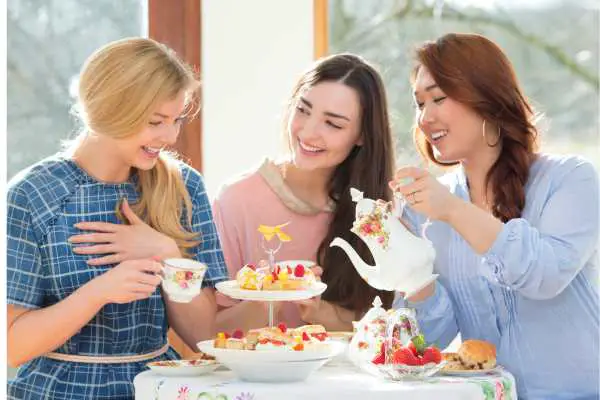
Relishing Culinary Delights: A Choreography of Taste
Prepare your taste buds for a culinary waltz like no other! As you’re seated at the elegantly set table, it’s time to delve into the art of graceful food consumption. Channel your inner connoisseur as you nibble on dainty finger sandwiches, savor decadent pastries, and crumble scones with an air of sophistication.
Art of Graceful Food Consumption
A delicate dance of manners comes into play as you balance between bites and conversations. Engage in mindful chewing, never talking with your mouth full—even the tastiest cucumber sandwich can’t conceal an unladylike display! And remember, a dainty nibble is preferred over an audacious bite.
Mastering the Sequence of Savories
Think of the savory dishes as characters in a gastronomic play; they each deserve their moment in the spotlight.
Start with the finger sandwiches, working your way from light to hearty. Allow your taste buds to experience a crescendo of flavors before moving on to the sweet finale.
It’s a culinary choreography that ensures each bite sings on your palate.
In this section, we’ll explore how to navigate the edible symphony of high tea, ensuring you’re not just eating but delighting in every bite with finesse and flair.
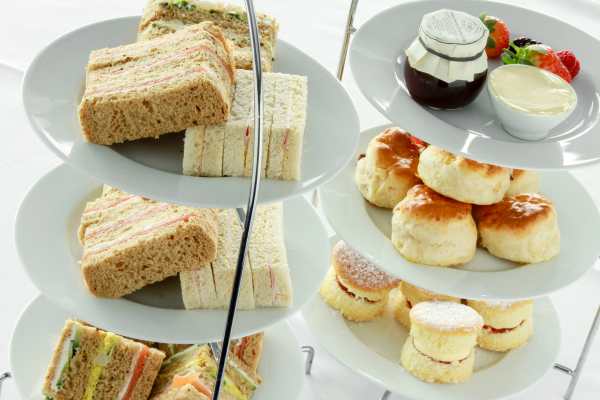
Savoring Tea with Elegance: A Dance of Aromas and Etiquette
Tea, the heart of the high tea experience, demands more than a casual sip – it calls for a symphony of gestures and manners that elevate your tea-time encounter.
Balancing Saucer and Cup Placement
Behold the timeless ballet of saucer and cup! Your saucer is your tea cup’s partner in crime, providing a temporary resting spot for it. Between sips, let the cup reunite with its saucer, creating an exquisite visual harmony.
Embracing the Correct Tea Cup Hold
Grip your tea cup like a refined aficionado. Pinch the handle gracefully between your thumb and index finger, allowing your other fingers to support the base. This elegant hold not only showcases your poise but also prevents pinky fingers from making an unscheduled appearance!
Gentle Swirls: Stirring Tea with Finesse
Behold the swirl, the gentle waltz that unveils the tea’s full flavor potential. Embrace the ritual of stirring, but remember – it’s a subtle, graceful motion, not a tempest in a teapot!
The Milk-Tea Choreography
When it’s time for milk and tea to intertwine, remember: milk first! Pouring milk into the cup before tea ensures a balanced infusion, allowing you to gauge the desired strength.
In this section, we’ll uncover the delicate choreography that transforms tea-sipping into an art form, as well as the rituals that ensure your cuppa is both flavorful and refined.
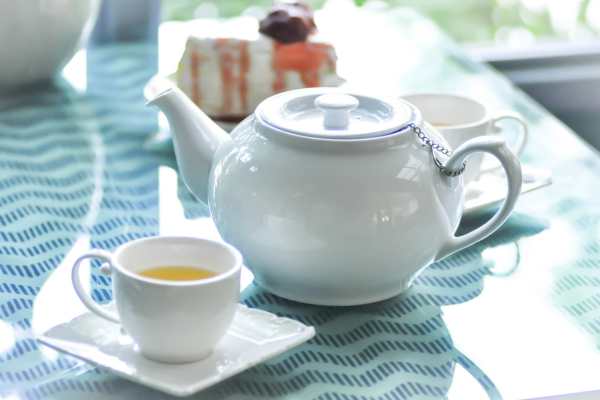
Engaging in Polite Conversation: The Social Symphony of High Tea
Amidst the clinking of cups and the rustling of napkins, high tea serves as a stage for refined conversations that harmonize with the delicate setting.
Art of Small Talk and Topics to Discuss
Embrace the art of small talk like a maestro conducting a captivating melody. Start with light, neutral topics – weather, hobbies, or shared experiences. As conversations flow, let your curiosity be your guide, delving into subjects that invite lively discussion without crossing personal boundaries.
Active Listening and Responding
Listening is the instrument that tunes the conversation. Nod, maintain eye contact, and offer thoughtful responses. Remember, it’s not a solo performance; each participant contributes to the conversational ensemble.
Navigating Cultural Sensitivities
In the diverse tapestry of tea guests, cultural awareness is key. Approach conversations with respect for differing perspectives and backgrounds. Embrace the chance to learn from each other, enhancing the tapestry of tea-time tales.
In this section, we’ll explore the delicate art of conversation, ensuring your words weave seamlessly into the high tea experience, creating an atmosphere of camaraderie and connection.
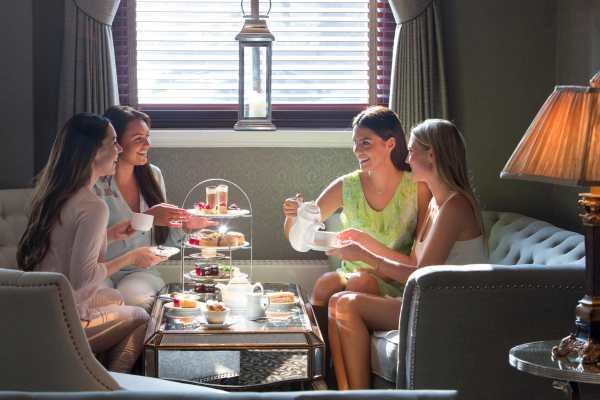
Observing Social Customs: Navigating the Etiquette Ensemble
High tea is more than a gastronomic delight; it’s a canvas where social norms and courtesy create a harmonious masterpiece.
Seating Arrangements and Placement
Think of seating as a choreographed ballet. The host orchestrates this dance, placing guests with care. Once seated, await the host’s cue before unfolding your napkin and placing it on your lap – a sign that you’re ready for the performance to begin.
Greeting and Acknowledging Other Guests
As guests join the ensemble, greet them with warmth. Maintain eye contact, offer a smile, and extend a polite greeting. Acknowledge the presence of each guest – it’s the overture to an evening of conviviality.
Thanking the Host or Hostess
A final curtain call demands gratitude. Before departing, express your appreciation to the host or hostess for their efforts. A simple “thank you” carries the weight of an entire evening’s enjoyment.
In this section, we’ll delve into the intricate choreography of social customs, ensuring that your gestures reflect respect, inclusivity, and appreciation, harmonizing perfectly with the high tea experience.
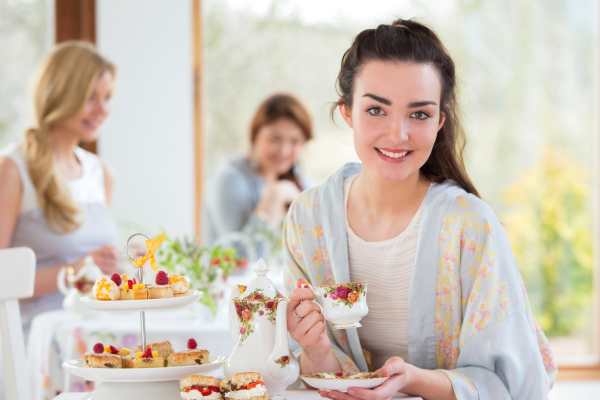
High Tea Activities and Entertainment: Elevating the Experience
High tea isn’t just a feast for the taste buds – it’s a multisensory extravaganza where activities and entertainment set the stage for unforgettable moments.
Tea Tasting and Flavor Pairing
Elevate your palate with a tea-tasting symphony. Explore a medley of tea varieties, savoring each note and nuance. Pair teas with complementary treats, letting flavors dance harmoniously across your taste buds.
Tea Etiquette Games and Challenges
Engage in tea-centric games and challenges that add a delightful twist to tradition. From identifying tea blends blindfolded to mastering the art of serving, these activities infuse a playful energy into the sophisticated affair.
Enjoying Live Music or Performances
Let live music or performances serenade your tea experience. Whether it’s a soothing string quartet or a charming acoustic performance, the ambiance is elevated as melodies mingle with the clinks of teacups.
In this section, we’ll explore the diverse ways in which high tea evolves into an interactive and captivating event, adding layers of enjoyment that complement the culinary elegance.
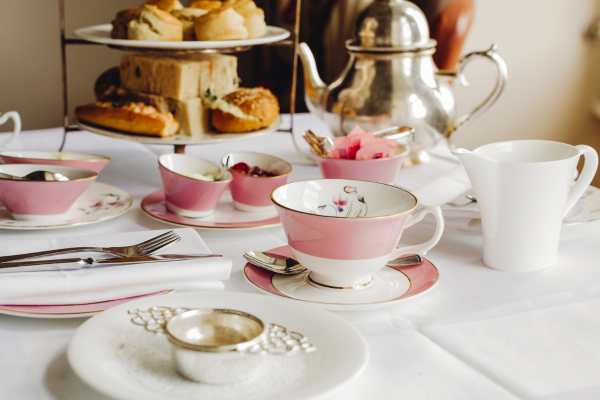
Proper Etiquette for Leaving: Bidding Adieu with Elegance
As the high tea curtain falls, exiting gracefully is the final act that leaves a lasting impression on the soirée’s memory.
Excusing Yourself Gracefully
When the time comes to leave, do so with the same grace with which you entered. Gently rise from your seat, excusing yourself from conversations with finesse. Let your departure be a quiet note in the teatime melody.
Thanking the Host and Other Guests
Extend gratitude like a well-composed coda. Express appreciation to the host or hostess for their hospitality, and offer kind words to fellow guests. Your genuine thanks elevate the shared experience.
Departure Etiquette and Farewells
Bid adieu with warmth and sincerity. Embrace the tradition of the final wave, leaving with a smile that lingers. Departure is not an end, but a promise of future tea-time tales.
In this section, we’ll explore the art of leaving a high tea gathering with finesse, ensuring your exit is as memorable as your entrance, and that your departure notes harmonize with the tea-time symphony.
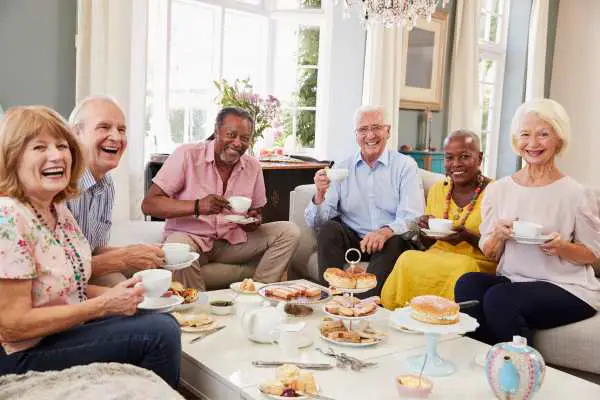
Frequently Asked Questions
Do you eat everything at high tea?
At a traditional high tea, it’s not necessary to eat everything that’s offered. High tea features an array of both sweet and savory treats, and guests can select what they’d like to enjoy based on their preferences and appetite. The goal is to savor a variety of delicacies in moderation, appreciating the flavors and textures.
Typically, high tea menus include items like finger sandwiches, scones, pastries, and cakes. Guests are free to choose which items they’d like to try and can pace themselves throughout the tea session. It’s important to engage in the experience, enjoying both the food and the social interactions, without feeling obligated to consume everything.
In essence, high tea is not just about indulging in food but also about relishing the ambiance, conversation, and the artful presentation of the offerings.
Can boys attend a tea party?
Absolutely, boys can absolutely attend a tea party! The idea that tea parties are exclusively for a certain gender is a misconception. Tea parties are social events centered around enjoying tea and refreshments, often accompanied by a pleasant conversation. They are not limited to any specific gender.
Tea parties can be enjoyed by people of all ages and genders. Whether it’s a formal high tea event, a casual gathering with friends, or even a children’s tea party, the enjoyment of tea, treats, and socializing is not restricted by gender. Everyone can appreciate the ambiance, camaraderie, and delicacies that tea parties offer.
In fact, breaking away from traditional gender stereotypes is a positive step towards inclusivity and creating a diverse and enjoyable environment for all. So, whether you’re a boy or a girl, attending a tea party can be a delightful experience.
What age do girls like tea parties?
Girls of various ages can enjoy tea parties, and the interest in tea parties can start as early as preschool age and continue well into their teenage years and beyond. The appeal of tea parties often depends on the individual child’s personality, interests, and social development. Here’s a general breakdown of different age ranges:
- Preschool Age (3-5 years)
Young children are often captivated by imaginative play, and tea parties can be a fun way for them to engage in pretend play. Tea parties with stuffed animals, dolls, and miniature tea sets can be popular at this age.
- Elementary School Age (6-12 years)
Many girls in this age range still enjoy imaginative play, but they might also appreciate more structured tea parties with friends. Tea parties can serve as opportunities for social interaction, learning about etiquette, and practicing conversation skills.
- Tween and Teen Years (13+ years)
As girls get older, tea parties can evolve into more mature and sophisticated gatherings. Themes can range from casual get-togethers with friends to more formal events. These older age groups might appreciate different types of teas, engage in meaningful conversations, and explore diverse tea flavors.
It’s important to note that individual preferences can vary widely. Some girls might be enthusiastic about tea parties from a very young age, while others might develop an interest later. The key is to create an environment that caters to their age and interests, whether that’s through playful tea parties with toys, creative crafting sessions, or elegant gatherings with friends.
Ultimately, the appeal of a tea party can transcend age, as long as the experience is tailored to the preferences and developmental stage of the participants.



